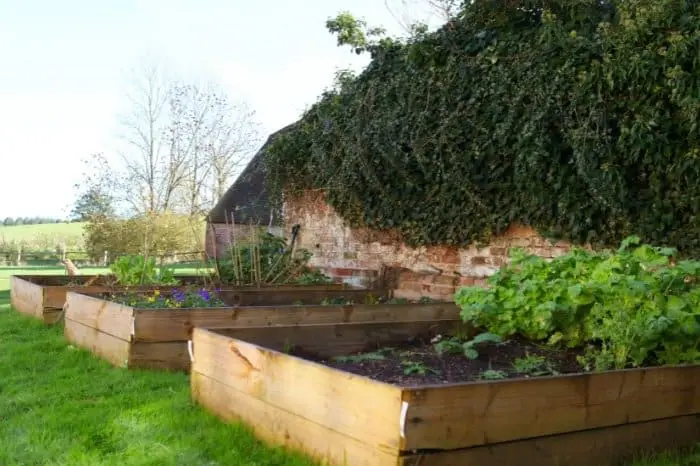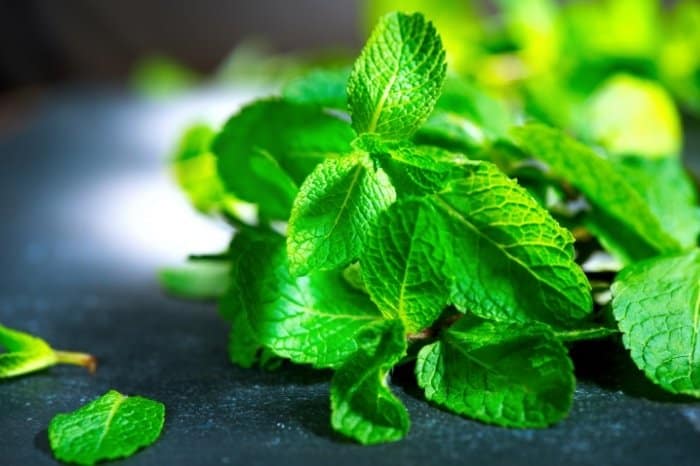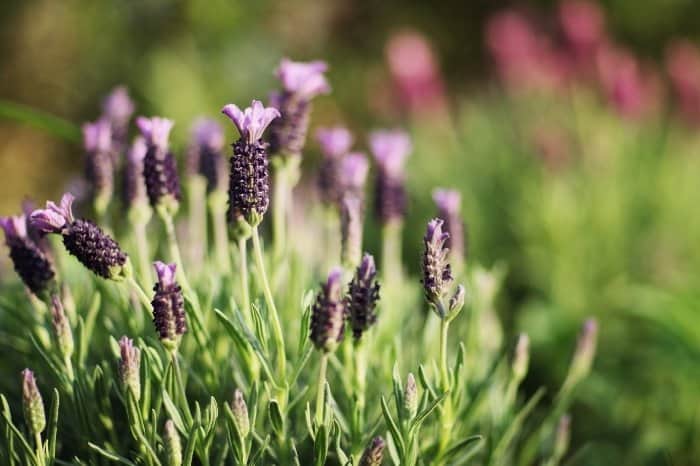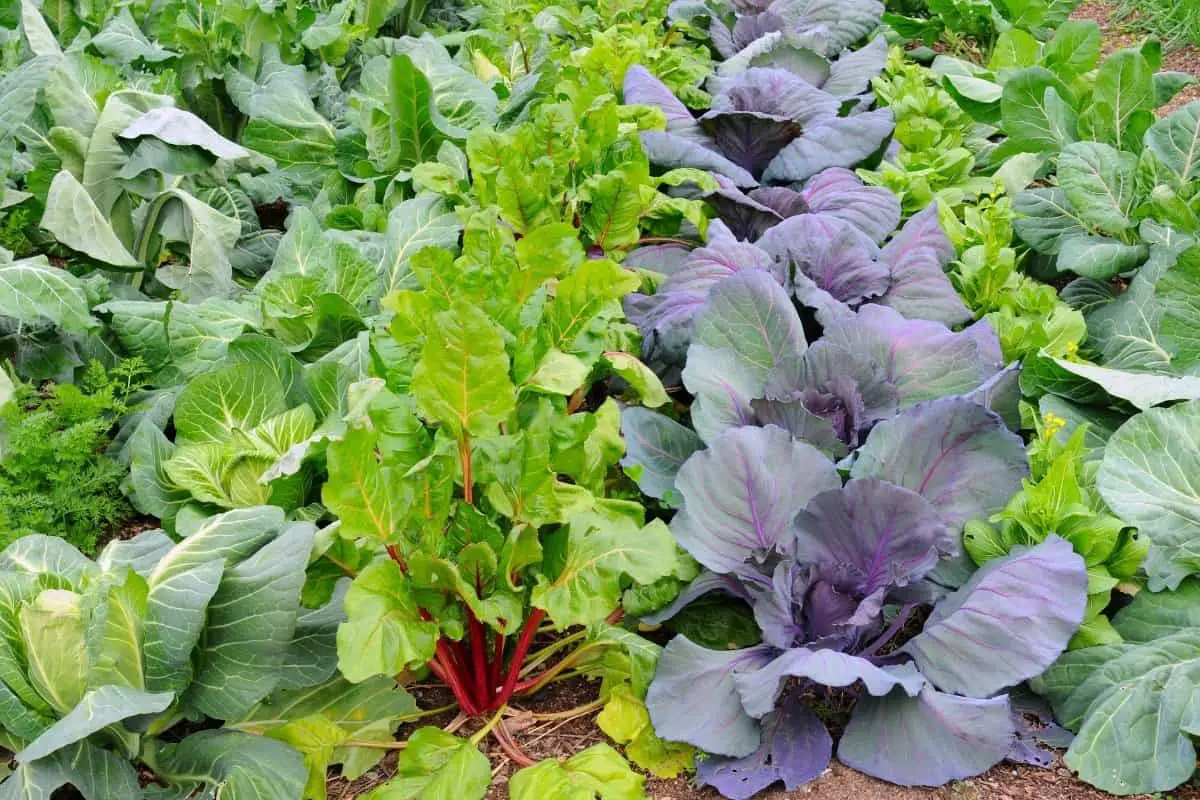Last Updated on December 27, 2022 by Griselda M.
Zone 7 herb planting schedule will help you know the kind of plants you need to grow in your garden throughout the year.
Gardening by USDA zone is a good starting point to help you handle your gardening tasks with ease. If you pair this knowledge with gardening experience and good year-by-year note-taking, then you should have a pretty workable annual gardening calendar.
USDA zone 7 gardeners are lucky to have a wealth of plants suitable for this growing area. Among them are many hardy herbs that do well in zone 7.
Naturally, herbs are easy to grow with many being drought-tolerant. They do not require highly nutrient-rich soil and most are naturally resistant to diseases and insects. This article provides you with a list of suitable zone 7 herbs and the areas to grow them.
Zone 7 Herb Planting Schedule
If you live in zone 7 the good news is that some many plants and herbs thrive in this region. So even if you know very little about gardening zone 7 is a pretty easy place to start.
The mild temperatures and long growing seasons provide plenty of opportunities to enjoy growing a wide variety of herbs.
The best time to start planting your herbs or vegetables is at the end of April after the last frost date. Usually, this zone’s last frost date is between late March to mid-April. However, ensure you consider the last frost dates as a mere guideline before planting.

Soil Preparation For Zone 7 Herb Planting Schedule
This zone has quite heavy and sticky soils, and gardeners in this area have to work a little to amend the Before planting any herbs or vegetables, you will need to prepare your soil to ensure it is easy to work with.
The soil in zone 7 requires lots of organic matter and enough aeration for the plant’s roots to breathe and for water to infiltrate appropriately.
To prepare your soil for the herb planting season, here are a couple of things you can do
- Break up and loosen the soil before adding any soil amendments. Spade the soil to a depth of about 8 inches and break any clods you come across.
- Spread a good layer of organic amendment over your garden and work it into your broken-up soil.
- Rake your amended soil to level it up and loosen it.
- The soil is ready for planting.
Perennial Herbs For Zone 7
Before we look at the perennial herbs that do well in this zone, it is essential to note that annual herbs have no problem growing in zone 7. They thrive during the growing season and then die back naturally at the end of the season. The annual herbs do not overwinter; therefore, you can only enjoy them in one season.
So what herbs are perennial in zone 7? It is essential to know that many perennial herbs overwinter. They include:
Mint
Mint grows in zones 4 to 9 and is notorious for being winter hardy. It is easy to grow and quickly takes over your garden. It comes in many varieties, from orange mint, spearmint, or chocolate mint.

Chives
This spring onion-flavored herbs thrive in USDA hardiness zones 4 to 8. They have edible clusters of flowers appearing in mid-spring rising above the upright foliage. Chives love the sun and rich garden soil amended with compost manure. Harvest them fresh and enjoy them added to omelets, vegetables, and salads.
Parsley
It is a common herb that has flat or curly leaves. It thrives in zone 6 to 9 as a biennial plant that produces leaves in its first season and flowers in its second.
Thyme
Thyme thrives in USDA hardiness zones 5 to 9, and it’s a common herb across Europe. It has evergreen leaves and requires well-drained soil in a sunny area. Harvest the leaf stems any time of the year or dries them for herbal mixes.
Oregano
Oregano prefers full sun in USDA hardiness zones 4 to 10. It has low rooting stems that spread around, requiring enough space to grow. You can dry the leaves in the fall for winter cooking.
Indoor Herb Garden Starter Kit – Certified USDA Organic Non-GMO
Chamomile
This herb is an excellent choice for gardeners in zone 7. It drives in zones 5 to 8 and is a flavorful herb for brewing calming tea.
Sage
The evergreen grey leathery leaves of sage thrive in USDA hardiness 4 to 8. This hardy shrub bears edible lavender-blue flowers in summer. It requires plenty of suns and average soil with good drainage.
Rosemary
Rosemary prefers USDA hardiness zone 7 to 10 and is grown as an aromatic evergreen hedge. This herb is sun and drought resistant with needle-like leaves. You can harvest fresh stems year-round or dry them for winter cooking.
French Lavender
The French lavender grows in USDA hardiness zone 6 to 9 and is extra beautiful and fragrant. It is a vigorous hybrid crossed between English lavender and Portuguese lavender.

Catnip
Catnip is a member of the mint family and thrives in zones 3 to 9. It is an excellent herb for brewing relaxing tea.
What Planting Zone is Zone 7?
If you are looking for answers to what planting zone is zone 7, then we have the answers for you! States that fall under the USDA plant hardiness zone 7 include most of the Arkansas area, Mississippi, Alabama, Georgia’s north side, the south of Tennessee, the western parts of South Carolina, North Carolina, the east side of Maryland, parts of Virginia, Long Island, and the coastal New Jersey region. Zone 7 is also best for planting vegetables that thrive in cool weather which include collards, turnips, kale, spinach, potatoes, radishes, onions, peas, carrots, lettuce, beets, cabbage, and broccoli.
These vegetables are usually planted in February in these regions as they have the perfect weather conditions that aid them in thriving.
What Growing Zone is 7b?
So, what growing zone is 7b? USDA Zone 7b is actually a subzone that certain plants thrive. This is because of its minimum low temperatures of 5 to 10 F during the growing season which is actually quite pivotal. Keep in mind that these temperatures don’t always stay consistent as they can dip too far in colder numbers. However, seeing that 7b is a subzone that covers the Piedmont region, this does not mean that areas nearby fall under the same category.
7b is great for growing herbs that are known to overwinter, nut trees which include hazelnuts, chestnuts, walnuts, and pecan nuts. Additionally, berry trees which include strawberries, blueberries, and blackberries, and other fruit trees like apricot, peach, pears, and apples thrive in zone 7b.
When Do You Plant Spinach in Zone 7b?
If you are a new or established gardener who is wondering when you plant spinach in zone 7b, then the following information would be useful to you. This subzone is great for cold hardy vegetable plants, therefore, you would find that plants like spinach thrive in these conditions. The best time to plant spinach in USDA Zone 7b would be in the mother of February as you can expect to harvest them in March.
However, this will apply only if the soil doesn’t freeze in your area. If the temperatures drop drastically in zone 7b, then waiting until the fall would be much safer to start your spinach plants.
When Do You Plant Okra In Zone 7?
Okra lovers want to know, when do you plant okra in zone 7? What you should ensure before you start planting okra is that the danger of frost has passed. This usually occurs in the early spring season when it is safe to plant okra in your garden in zone 7. If you have already prepared or started okra seedlings indoors, then you can transfer them outside when the spring season begins. Remember to amend your garden with organic matter before planting as it will enrich the soil and offer your plant the nutrients it needs to reach its full potential.
When Do You Plant Peas In Zone 7?
When do you plant peas in USDA hardiness zone 7 would depend on a few factors. Seeing that these are cold-weather crops, these plants are mostly planted in February in zone 7. However, many people have reported sowing peas in March through to early July with favorable results. It is essential to choose a spot in your garden that gets a minimum of six hours of direct sunlight daily for your pea plants to thrive. Also, when planting peas in zone 7, amending the soil to enhance its drainage properties will afford you an abundant harvest.
When Do You Plant Radishes in Zone 7?
Raddish is a cool crop therefore it is essential to know the answer to, it when you plant radishes in USDA plant hardiness zone 7. Although most people opt to plant them in February due to the cool temperatures, radish seeds may also grow well in this zone if planted in the April and May months. If you opt to plant them during this time, then you can look forward to a spring crop.
If you are looking forward to a fall crop, then it is possible to plant radishes at the beginning of August or September. Keep in mind that to retrieve an abundant harvest, you would need to give your reddish plants the proper care and maintenance throughout the growing period.
When Do You Plant Calendula Seeds in Zone 7?
So, when do you plant calendula seeds in zone 7? USDA plant hardiness zone 7 offers exceptional growth to vegetation that thrives in cool weather conditions. This includes calendula, which is widely grown in the area. Therefore, it is best to sow calendula seeds in the early spring season. This is because there is still a possibility of light frost during this time which aids them in thriving.
It is also advisable to continue your calendula seed sowing every second week until the early summer season. The reason for this is that you can expect beautiful blooms in the fall season if this procedure is followed. If you have started your calendula seeds indoors, transplanting them when the daytime temperatures stay at a consistent 50 F would aid in their growth.
Final Thoughts – Zone 7 Herb Planting Schedule
When choosing herbs for zone 7, it is vital to go for perennial herbs. If you want to try out a herb that you are not sure is suited for zone 7 you might want to try growing it in a container. This will allow you to bring it indoors over winter and watch how it does.
Otherwise, grow any other herbs, not for zone 7 as annuals. In this case, the herbs will set seed and die within a single growing season. Then you can regrow them again in the coming season.
You can either start your herbs as seeds or buy seedlings from your nearest garden center. We recommend buying young plants or seedlings to plant directly into your garden. They are very affordable and save you the worry of growing from seeds. At the beginning of Spring, visit your local garden center where you can find a wide selection of them.
If you want to start from seeds, do so indoors before the last frost date. Provide them with adequate light from a south-facing window to provide them with the right growing conditions.
Caroline is a gardener who loves to get down to the nitty–gritty of gardening. She proudly proclaims herself as a ‘dirt worshipper‘ and can often be found deep in the garden, covered in soil and singing to her plants. As a self–proclaimed ‘plant whisperer‘, Caroline believes that plants need love and attention just like any other living thing, and she loves to give them both. When she‘s not tending to her garden, you can often find her researching the latest gardening trends, or teaching others how to make their gardens thrive



